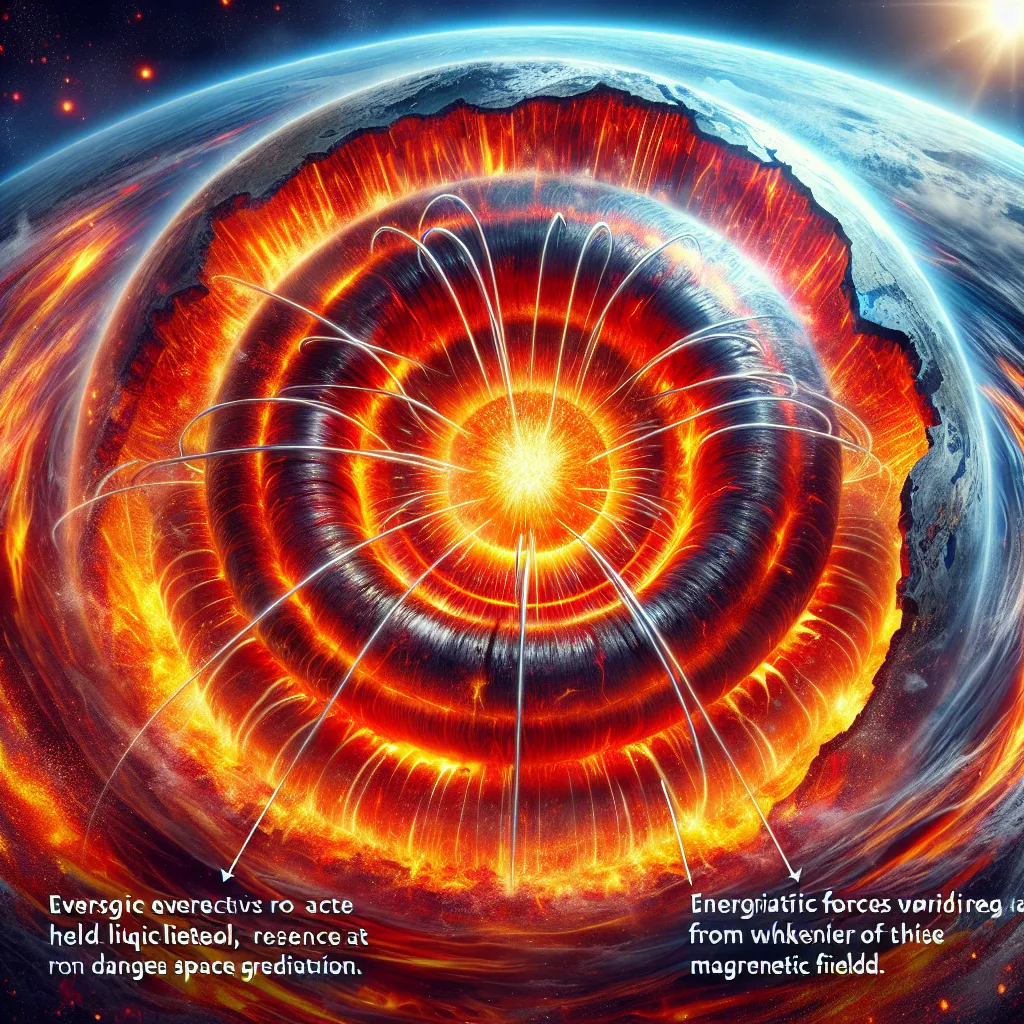Beneath our feet lies a place no human can go, a fiery, pressurized world that seems inhospitable. Yet, this intense environment is crucial for life on Earth. The Earth’s core is akin to a colossal generator, driving magnetic fields that shield us from the harshness of space. Liquid metal, scorching as the Sun’s surface, surges deep below, creating magnetism essential for our survival. However, new research hints that this magnetic dynamo is cooling and weakening, bringing into question the future of our planet’s life-sustaining shield.
We know more about the surface of Mars than what lies beneath our own feet. Despite our advances in space exploration, the Earth’s interior remains largely a mystery. The deepest drilled hole, the Kola Superdeep Borehole in Russia, reaches just 7.5 miles down—far short of the Earth’s nearly 4,000-mile radius. The Earth’s layers, starting from the thin crust to the vast mantle and finally the solid and liquid core, hold secrets that are difficult to uncover.
If one could freefall from the surface to the center, dropping through each layer, it would be a descent of unimaginable scale. After a minute, you’d pass beyond the deepest hole ever drilled. In hours, you’d cross the putty-like mantle. The core, made of liquid and solid iron, lies at the end of this fantastical journey. But the reality of such an adventure is stark: we can’t survive the extreme conditions, with temperatures rivaling the Sun and pressures millions of times greater than Earth’s surface.
The heat at Earth’s core originated from catastrophic collisions during the planet’s formation and is supplemented by radioactive decay. This intense heat and pressure make direct exploration impossible, so scientists use innovative methods to simulate conditions in the core. High-pressure experiments, such as those using a diamond anvil, help understand materials’ behaviors deep within the Earth.
Interestingly, the Earth’s magnetic field is generated by the turbulent motion of liquid metal in the outer core. This magnetic shield protects us from deadly cosmic radiation. Without it, Earth could become as barren as Mars, which lost its field millions of years ago. The magnetic field also drives numerous natural phenomena and protects our atmosphere.
However, the Earth’s magnetism is not constant. Historical data reveal fluctuations and even complete reversals—where north and south magnetic poles swap places. Alarming signs suggest a weakening field might indicate an upcoming reversal, which could expose us to higher radiation levels, affecting technology and health globally.
If Earth’s magnetic field dissipates completely, like Mars’, we’re left vulnerable. Mars’ history offers a grim precedent. Once having a magnetic field and possibly water, Mars lost both, becoming a dry, lifeless desert. The core’s cooling process could eventually lead to Earth following a similar fate, though this may be millennia away.
The concept of an active, heat-generating reactor at Earth’s center is a controversial yet fascinating theory proposed by some scientists. This theory suggests a natural nuclear reaction in the core fuels the planet’s magnetic dynamo. Whether fact or fiction, it underscores the critical role of the core in Earth’s fate.
In essence, the core is Earth’s beating heart. Its turbulent, molten metal dynamo is what sustains life on the surface by generating the magnetic field that protects us. As this heart cools and slows, the future of Earth’s habitability hangs in the balance. The core’s secrets, though buried miles beneath, are crucial for understanding our planet’s past, present, and future.






